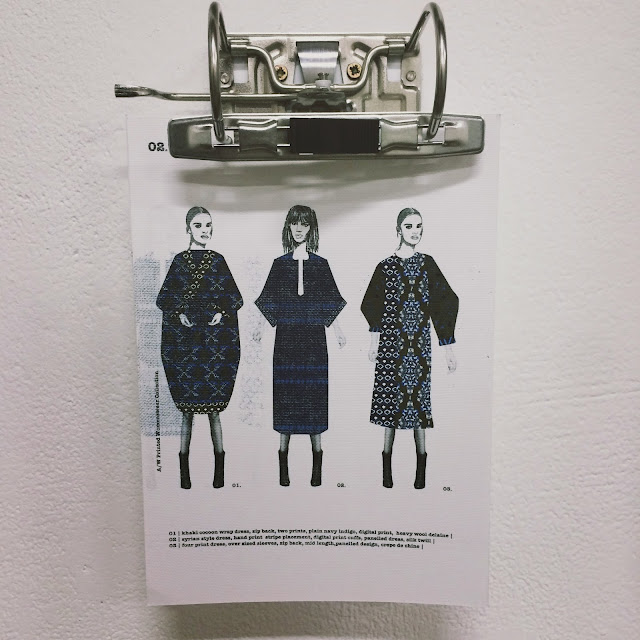The theme of this project was to design and make a shirt
with sporty influences such as zips and contrasting panels within 4 workshop
sessions. I started researching shirt styles within current trends whilst also
paying detail to historical designs and usage.
I came up with various designs involving contrasting panels,
diverse seams, collars and shoulders. At first it was a struggle to think of an
idea withholding the minimalistic behaviour I apply to my designs whilst
creating something fresh and new. Whilst researching styles of shirts and
blouses I came across a Ralph Lauren frill shirt, which in context, is
completely the opposite of sporty and is in fact considered as a feminine
style. After evaluating the stunning yet adverse style I decided to explore
incorporating the frill technique with sporty features such as contrasting
panels, zips and stand collars.
Once deciding on a final design I mapped out a basic
construction plan which I later redrew and added more in depth detail on Adobe
Illustrator. Using this as a step-by-step guide I started my creative journey.
I am pleased with my final outcome and how the design has
developed from a singular idea, to a 2d design then into a 3d functional
garment. I wasn’t overly confident to how the frill would turn out with the
extra layer being the contrast panel, as I had only experimented with one layer
which hung nicely upon a mannequin. However after seeing the final outcome with
all elements coinciding, I was rather pleased I took the risk.
If I was to make improvements to my shirt I would pay more
detail and caution whilst sewing the statement frill. This is because I noticed
after completing the shirt that the frill on the left side of the shirt is 1cm
lower than the right side. I would also improve the straightness of the
stitching along the hems and ensure that they are even and are stitching
through all the layers they are supposed to.
In conclusion I am pleased with my outcome of this project
as I believe I achieved the best work I could in at the stage I am currently
at. Although there are imperfections and things I now look upon that I would
debate changing, I realise that with practice and experience makes perfect.










































